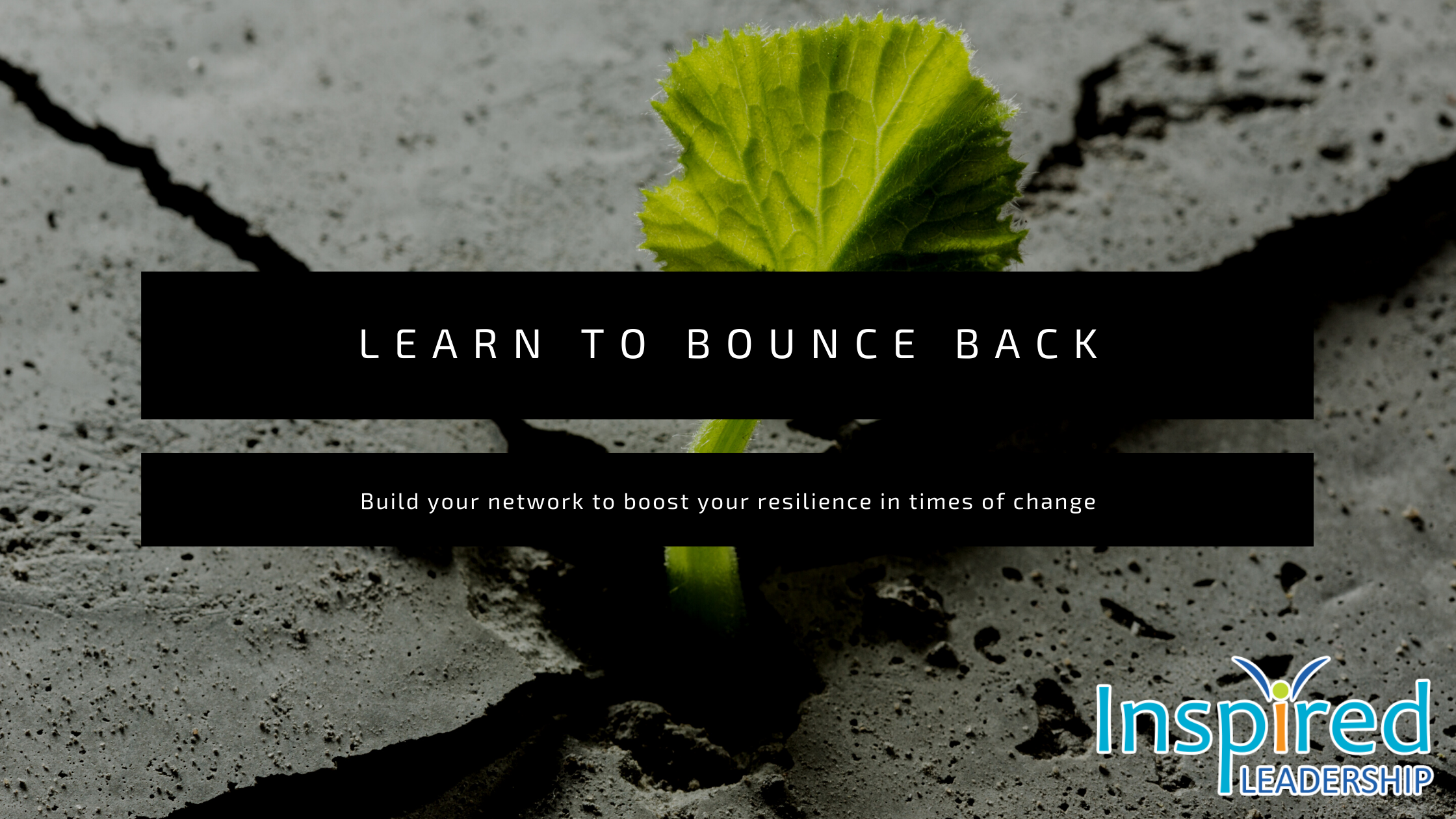Build your network to boost your resilience in times of change
The world is changing so fast. It’s as if the ground is shifting and the wave is building and either we get dunked onto the sand with our bikini around our necks, or we build a surfboard and learn to surf the wave.
The skills and personal competencies we need to survive and thrive in this rapidly changing world are not the same as they were 20 or 30 years ago when some of us entered the working world. Yesterday, experience and knowing the way things work, was a strength. Today, the experience can be something that stops you from learning and seeing opportunities for change. Many of us need to unlearn old and established thinking patterns and mindsets to remain relevant in a shifting world. We need to let go of the idea of company loyalty or vice versa as companies restructure and reorganize in an effort to surf the wave too.
Building personal resilience
Building personal resilience is absolutely key so that you can both take advantage of the wave, and, if you find yourself on the sand after a wave has hit you, you can stand up, shake it off, and get back in the sea. The first part of building personal resilience that has been incredibly valuable for me personally has been networking. Building and maintaining a network is NOT something that most of us find at the top of our to-do list, but it is essential.
I spent years training leaders on the importance of networking but doing very little myself. It was only when facilitating a particularly great class in Dubai that I had a personal epiphany about networking and decided to eat my own cooking. I was well known within my company globally, but not in my own country and local industry. This is largely due to having a really good “head down” approach: I loved what I did, I did it well, and didn’t have a burning platform to change the status quo. The problem of course is that the burning platform gets really hot really quickly and networking takes time and sustained energy. So it is not something you can build overnight by doing a 3 hour LinkedIn learning course!
Main reasons for networking include:
- Information gathering and sense-making – because it is hard to keep abreast of what is happening, so tapping into the collective wisdom of the tribe is helpful;
- Gathering expertise & insights – the more diverse your network the better, as innovations and ideas often springboard from one industry to another;
- Opportunity spotting – this is particularly useful if you landed on the sand recently!
- Talent spotting – great for growing your team or recruiting partners and associates.
Most people have a small core network of 12-28 people. And an outer core much larger. And a social network that could go into the thousands!
I would like to encourage you to write down the names of the people you would put in your inner network, add the outer network and then interrogate the list for diversity. That can mean a lot of different things – age, level within organization/industry/ profession, geography, gender, race…. If your network is narrow or homogeneous you might limit the benefits it can bring you. That could be a signal that growth is needed.
I have personally found that networking has been easier than I thought it would be. Mostly, people are pretty open to a catch-up coffee even after a long silence; and the purpose of conferences and many events is to network… so people are expecting this and that takes a fair amount of the awkward out of the room.
First steps for hardcore networking:
- Update your LinkedIn profile (so when someone googles you, they actually find something useful)
2. Identify a conference, external training, or external networking event that sounds interesting to you (e.g. From Reaction To Resilience virtual connect)
3. Actually attend
4. But attend alone, so you are forced to speak to the person next to you (leave your comfort buddy back in the office, otherwise you spend the whole time talking to them!)
5. Tap into your inner extrovert and introduce yourself to people. Ask them questions about themselves, and listen with an open mind. Don’t be scared to ask for their contact details (if they have a card, write on it some personal detail about them, or what you two spoke about, so you can follow up with it in a call or email after the event.)
6. Send them an email after the event and set up a coffee chat to build the relationship. This is not about closing a deal, it is about making a network contact who at some point you may be able to help or visa versa.
For an easier approach:
Set yourself a goal to connect up with 10 ex-colleagues, people you studied with or were in a sports club with. Can be either on LinkedIn or other social media. Start a conversation to reconnect with them, buy coffee. It is worth it. Building your network is one sure-fire way of taking a proactive step to build personal resilience during times of change.
To learn more about this important skill, contact Inspired Leadership
Have a look at our Free Resources and Downloads!
About the Author:

Angela de Longchamps has invested 20 years of practical experience in social and behavioral psychology and human resources into creating highly entertaining, sought after, and valued courses in her field of expertise: Leadership and Executive Presence. She is a creative and innovative speaker, facilitator, designer, and consultant. Angela has corporate experience as a generalist HR professional. This is prior to moving into an international leadership development facilitator & management role at IBM. She is an event speaker & facilitator both in South Africa where she lives and abroad. She is the founder of Inspired Leadership & works with certified partners all over the world to bring this unique approach to developing leaders to organizations.
Contact her: Angela.del@inspiredleadership.world to discuss how you can build accountability and kindness into your management practices.
And check out her #Lessonsfromthebike playlist on Youtube for leadership lessons learnt on the back of a bicycle.





